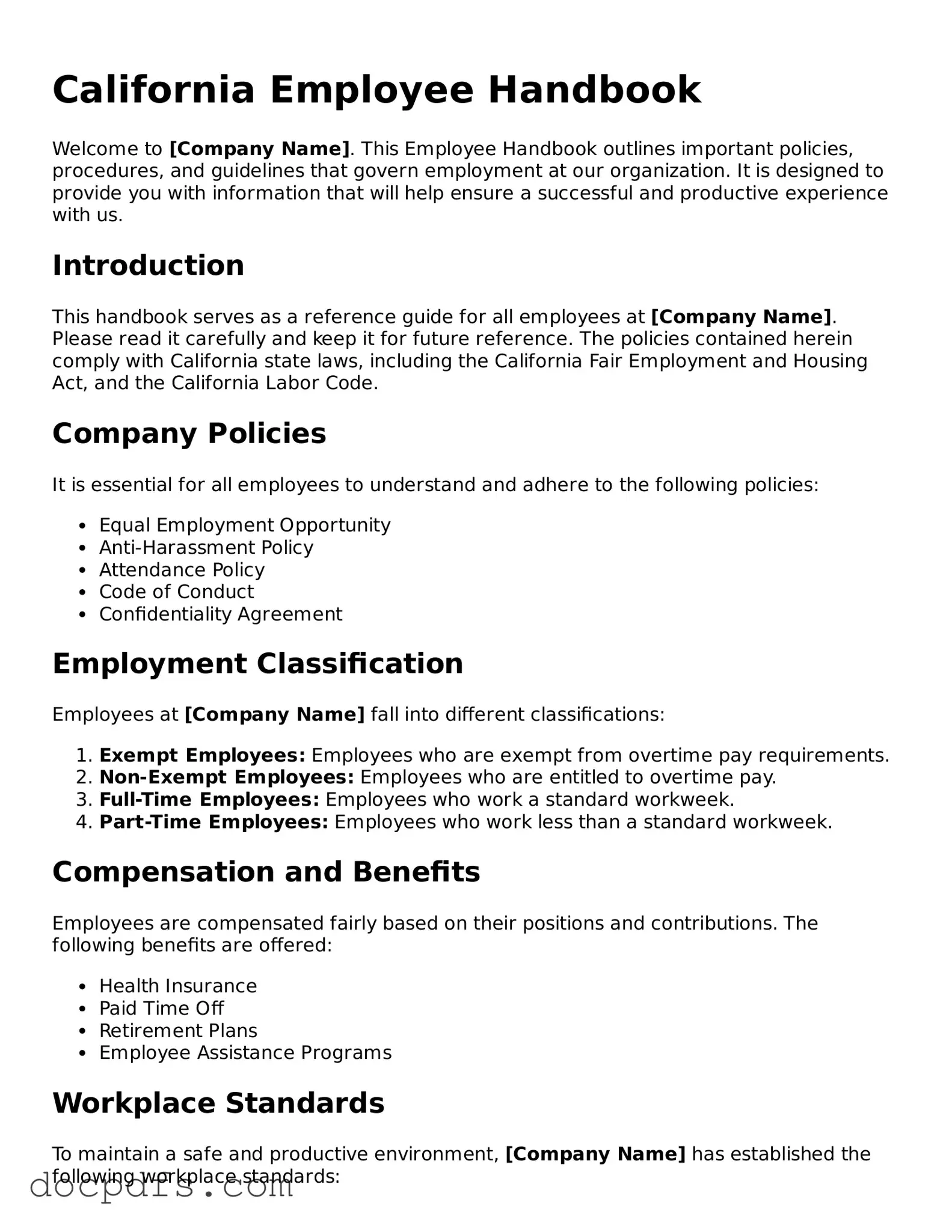What is a California Employee Handbook?
A California Employee Handbook is a comprehensive document that outlines the policies, procedures, and expectations of an employer. It serves as a guide for employees, detailing their rights and responsibilities within the workplace. The handbook typically includes information on company culture, workplace conduct, benefits, and legal rights, ensuring that employees understand their roles and the resources available to them.
Why is it important to have an Employee Handbook in California?
Having an Employee Handbook is crucial for several reasons. First, it helps establish clear expectations, which can reduce misunderstandings and conflicts. Second, it provides legal protection for the employer by documenting compliance with state and federal laws. Additionally, a well-structured handbook can enhance employee morale and engagement by fostering a transparent and inclusive workplace culture.
What should be included in a California Employee Handbook?
While the specific contents may vary by organization, a California Employee Handbook should generally include the following:
-
Company Overview:
A brief history and mission statement.
-
Employment Policies:
Information on hiring, termination, and performance reviews.
-
Workplace Conduct:
Expectations regarding behavior, dress code, and harassment policies.
-
Compensation and Benefits:
Details on pay schedules, overtime, and employee benefits.
-
Leave Policies:
Information on vacation, sick leave, and family leave.
-
Health and Safety:
Guidelines for maintaining a safe work environment.
How often should the Employee Handbook be updated?
It is advisable to review and update the Employee Handbook at least annually. Changes in laws, regulations, and company policies may necessitate updates. Regular revisions ensure that the handbook remains relevant and compliant with current legal standards. Additionally, if significant changes occur within the company, such as mergers or shifts in management, a prompt review is warranted.
How can employees access the Employee Handbook?
Employees should have easy access to the Employee Handbook. It is common practice to provide it in both digital and printed formats. Many companies choose to distribute the handbook electronically, allowing employees to refer to it at any time. Alternatively, printed copies can be made available in common areas or upon request. Ensuring that all employees receive and acknowledge the handbook is essential for fostering understanding and compliance.
What should employees do if they have questions about the Employee Handbook?
If employees have questions or need clarification about the Employee Handbook, they should feel encouraged to reach out to their supervisor or the Human Resources department. Open communication is vital for addressing concerns and ensuring that everyone understands the policies in place. Employers should also consider providing training sessions or Q&A forums to facilitate discussions about the handbook and its contents.
